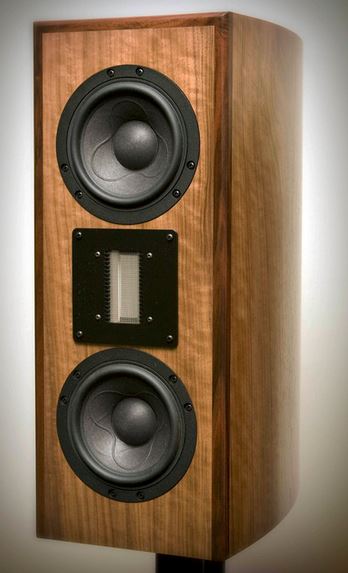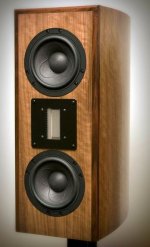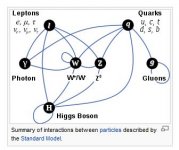Without significant financial resources, I am lucky enough to have heard some of the finest speakers in the known Universe. My Bro-in-Law has one of the top 5 stereo systems in the known Universe. He thinks nothing of spending £25,000 on a tweeter amp. I believe he owns 25 kW of amplification spread amongst umpteen channels. The bottom £ line probably verges on Millions. 😱

What is great about this sort of thing? Mainly that the dispersion is exactly symettrical. We can help it out by separating out the bass displacement. Because bass extension tends to drive a driver out of its comfort zone into distortion. So apply sub-woofers.
Here's something I find interesting. Everybody who loves High Fidelity loves that old Supertramp album and its premier track "Dreamer": YouTube
What many people don't know is that the album was mixed explicitly left, right and centre. Nothing in between. Which, IMO, is why it sounds so clear. Magic. I'll relate it to Quantum Field Theory at some other time, but I think that direction and clarity are mutually interchangeable. The usual trade-offs. 🙂
What is great about this sort of thing? Mainly that the dispersion is exactly symettrical. We can help it out by separating out the bass displacement. Because bass extension tends to drive a driver out of its comfort zone into distortion. So apply sub-woofers.
Here's something I find interesting. Everybody who loves High Fidelity loves that old Supertramp album and its premier track "Dreamer": YouTube
What many people don't know is that the album was mixed explicitly left, right and centre. Nothing in between. Which, IMO, is why it sounds so clear. Magic. I'll relate it to Quantum Field Theory at some other time, but I think that direction and clarity are mutually interchangeable. The usual trade-offs. 🙂
Last edited:
Steve must be cutting back on coffee. Two caps in parallel, you add their capacities.
Resistors act as he said.
Resistors act as he said.
Last edited:
Steve must be cutting back on coffee. Two caps in parallel, you add their capacities.
Resistors act as he said.
Boswald, you've got to get up pretty early in the morning to catch me out on electronics, before I've had my coffee and ( in an ideal World...) Scotch, or on my more favourite subject "Quantum Field Theory" though I don't write off "String Theory"...
How it works is two 2uF capacitors wired in series amount to 4uF. Two 8uF capacitors wired in parallel amount to 4uF. It's not exactly the same thing with drivers, but that is subtle stuff and depends on separate or common enclosures. I reserve my secrets... 😎
What's wrong with that statement? Nothing, IMO. But I like you.
If you are interested in the theory of mutually interacting components, and IMO, only magnetic coils aligned on the same axis qualify at audio frequencies because I have measured this effect, along with twin bass drivers in a common enclosure.
What I find interesting is series wired bass units in an MTM common enclosure (or box) behave entirely differently from parallel wired. I go for series wired. 😎
TBH, I find the Higgs Boson way more interesting than loudspeakers. Just me...
Attachments
Last edited:
How it works is two 2uF capacitors wired in series amount to 4uF. Two 8uF capacitors wired in parallel amount to 4uF. It's not exactly the same thing with drivers, but that is subtle stuff and depends on separate or common enclosures. I reserve my secrets... 😎
Sorry but that is just wrong. Two 8uF capacitors wired in parallel amount to 16uF, two 2uF capacitors wired in series amount to 1uF.
I know that it was 1st April, but that would confuse some people and could end up inadvertently frying a driver...
Maybe you were thinking of inductors?
Wharfedale Dovedale 3 s are very lovely on valve amp, but most often need re rubbering of the woofer.
How it works is two 2uF capacitors wired in series amount to 4uF. Two 8uF capacitors wired in parallel amount to 4uF. It's not exactly the same thing with drivers, but that is subtle stuff and depends on separate or common enclosures. I reserve my secrets... 😎
TBH, I can't believe I got that so wrong...
As a rather pathetic excuse I can only say I was mixing Impedance with Conductance. Inverses. And the laws of combination flip accordingly. 😱
Apologies and congratulations to all who picked up the mistake. HOWEVER, just because I can make an occasional mistake (and TBH, I have been focussing on other areas of Life and the Universe lately...) doesn't invalidate all the things I get right.
I still think this sort of thing has a lot going for it:
Such magnificent symmetry. 😎
Last edited:
Thanks everyone for the help. Managed to find a 4uf for the tweeters and also discovered the Glendale's also use a 16uf for the mid. Just finished them and very happy with the sound . the bass is much more controlled sounding , vocals clearer and the ribbon tweeters have come back to life!
Thanks again everyone for the help ! Learnt a lot in the process.
Thanks again everyone for the help ! Learnt a lot in the process.
Those old inductors with the thin (~8mm diameter) ferrite cores are horrible. I've tested a few from 1980s era speakers and they all have terribly low saturation current. If you rip out the core they can drop to 1/5th the inductance or worse - such a high permeability core is a cost cutting measure to save on copper wire. If you're going to the trouble to recap it might be worth changing those for an air core with beefier wire (to maintain the same DC resistance), or a modern steel laminate with a much beefier core e.g. ERSE I-core.
- Status
- Not open for further replies.
- Home
- Loudspeakers
- Multi-Way
- Wharfedale Linton 3XP Recap



